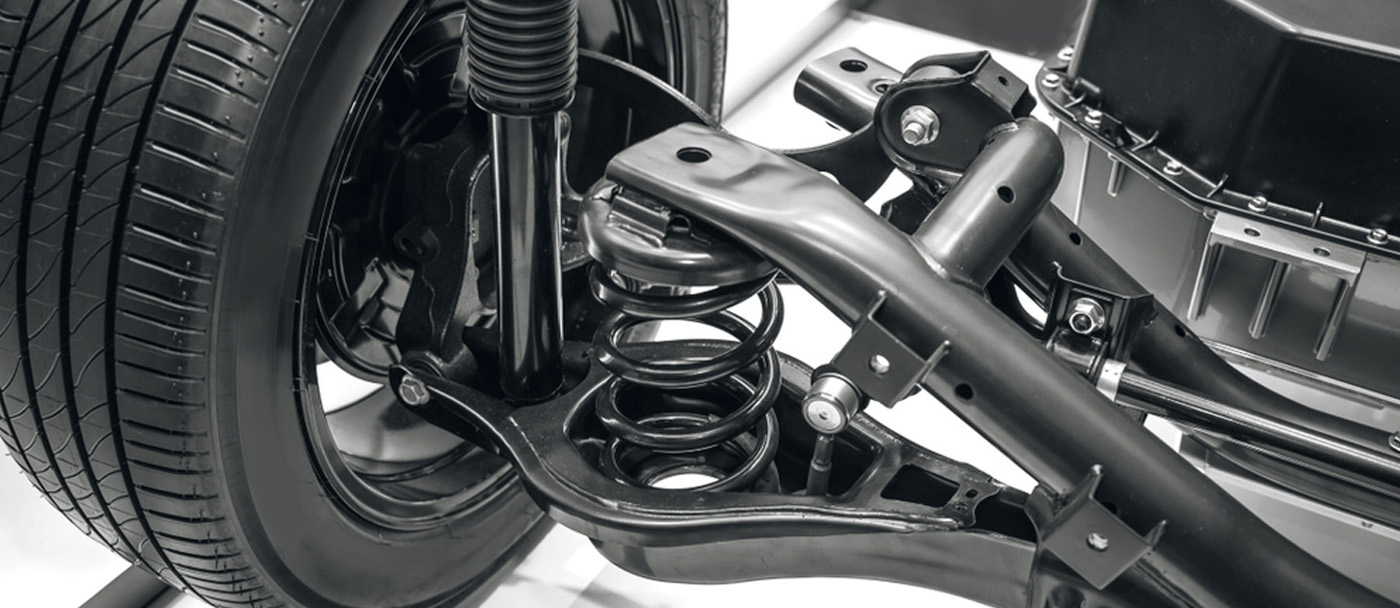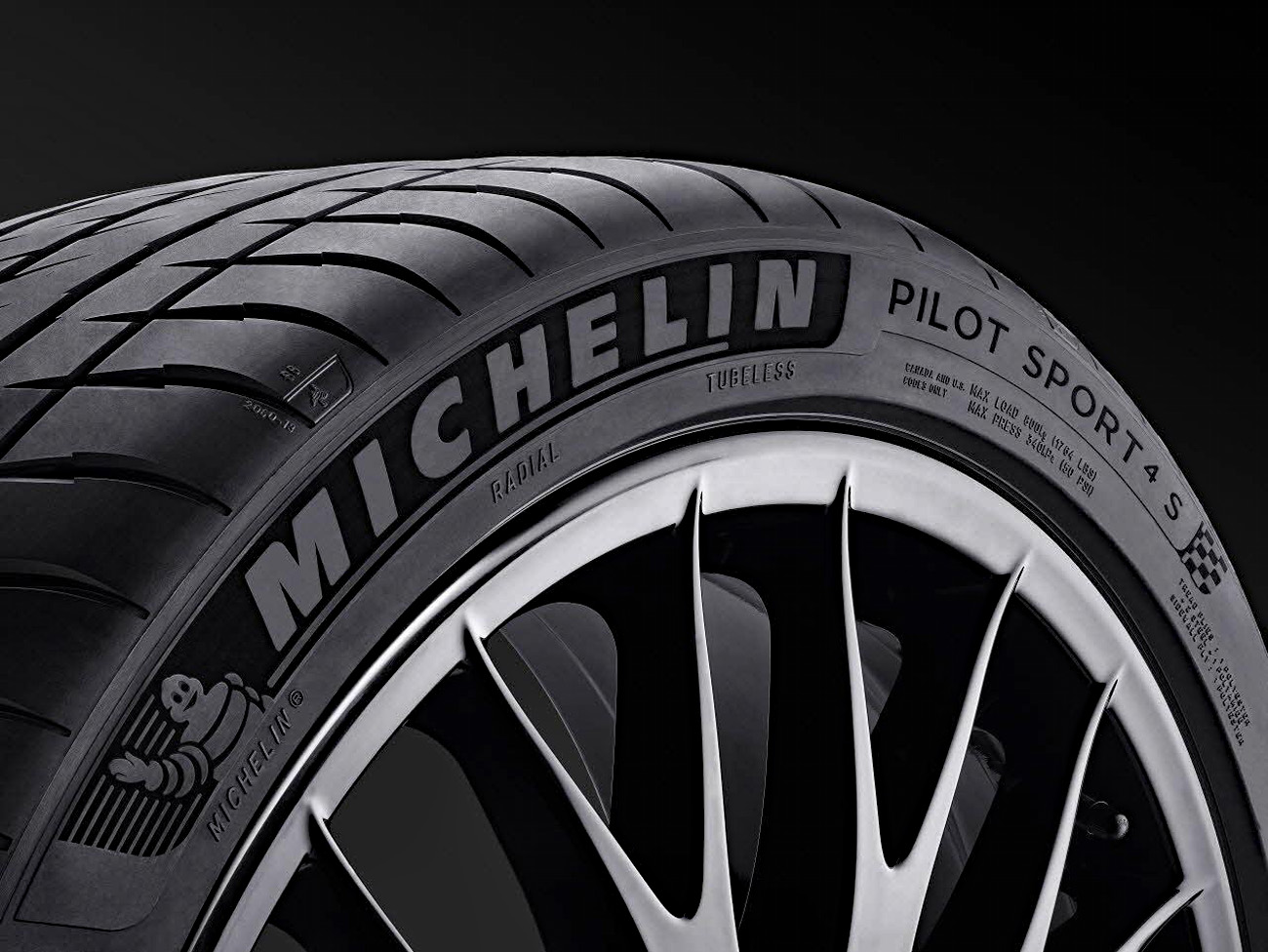
As vehicle ordering has been simplified over the years, things like a sport suspension have increasingly come as part of a package or trim level, and less often as a stand-alone option. That said, the sport suspension has not gone away, and on many new-car models, has become more common as you move up the trim-level hierarchy. But what is a sport suspension, and why would anyone want one?
What is a Sport Suspension?
History

In the Eighties, most General Motors midsize and large cars were available with a sport-suspension—sometimes referred to as the “heavy duty” suspension. The sport suspension options were identified unceremoniously by their option codes, including FE2 and FE3 (Oldsmobile) and F41 (Chevrolet). The suspension upgrades were cheap, generally less than $100, and usually meant a profound improvement in handling.
Pontiac briefly boasted the implementation of its “Radial Tuned Suspension,” which was engineered to maximize the impact of then new steel-belted radial tires. The RTS, as it was known, was as much about ride quality as it was performance.
BMW
Even innately sporty cars are occasionally offered with upgraded or “sporty” suspensions. The 2025 BMW 430i Coupe, for example, can be ordered with the $1500 Dynamic Handling Package, which includes among other things a firmer suspension, special brakes, larger wheels and tires, and a limited-slip differential.
Improving Handling
But cars and crossovers handle better than they used to, and modern drivers seem less interested in precision handling and more concerned with connectivity and monthly payments. Yet, there are still vehicles that seem ready to corner briskly and be hustled down a stretch of curvy blacktop. And for those cars, makers still offer upgraded and performance suspension setups, and these setups can have a profound impact on the ride quality, quietness, and highway comfort of your new car.
Let’s have a look at what a sport suspension might include:
Elements of a Sport Suspension
Stiffer Springs
Fundamental to improving handling, stiffer—or firmer—springs will be less reactive to road imperfections, and provide greater control subsequent to an impact or road-surface reaction. The use of stiffer springs generally brings with it a firmer ride and increased road noise.
Firmer Shocks and Struts

As with stiffer springs, more-aggressively tunes shock absorbers and MacPherson Struts bring with them improved ride control, usually at the expense of ride quality. Generally, driving enthusiasts looking for improved handling accept the firmer ride as a reasonable tradeoff.
Reduced Ride Height
It may seem trivial, but reducing a vehicle’s ride height—even by just in inch–can improve handling by lowering its center of gravity—which generally reduces unwanted lean in corners. Reduced ride height is achieved by using shorter springs and recalibrated shocks and struts. As you might expect, reducing a spring’s up-and-down travel will impact ride quality.
Upgraded Roll/Sway Bars
Roll bars and sway bars technically have different functions, but they do operate in the same manner. Metal tubes (often solid) that run laterally between wheels on a given axle, roll and sway bars essentially “attach” the wheels, and reduce the amount roll/sway/lean in a corner. These bars are very effective in improving at-speed cornering control, but like most handling upgrades, can impact ride quality by limiting up-and-down wheel travel.
Adaptive Components
Many premium and luxury-oriented performance vehicles employ computer-managed adaptive suspension components to improve handling. Using electronically controlled dampers—often adjustable shock absorbers—these systems generally work in two ways:
Manually
By way of “drive mode” controls in the cabin, a driver can select from a number of suspension configurations, generally including “Comfort,” “Normal” and “Sport.” Opting for the Sport mode generally means engaging the adjustable suspension components at their most aggressive (sportiest) settings.
Note that in many cases, these drive modes not only manipulate suspensions settings, but throttle mapping and steering resistance, as well.
Automatically

Some vehicles maybe be equipped with automatically adjustable suspension which require no driver input. These systems respond to changes in road conditions and respond accordingly. Often, there is an Automatic drive-mode setting among the other options on otherwise manual setups.
Reinforced Mounts/Bushings
Bushings are found at the intersection of separate chassis and suspension parts, and are employed to prevent noise and vibration from traveling between individual elements of a vehicle’s structure.
Often, more-elaborate sport-suspension setups will include firmer/harder bushings to help control motion that may be permitted by softer examples. The use of harder bushings will also improve road feel, but will also contribute to a firmer ride and likely additional cabin noise.
Related to bushings and other enhancements are body braces designed to improve structural rigidity while cornering. Most commonly, a brace is added between under-hood strut towers to reduce chassis flex. Braces may come as part of some sport-suspension set-ups, but are also commonly fitted to a vehicle as an after-market upgrade.
Performance Steering
Steering feel is important to enthusiast drivers, and because most modern vehicles come with electric power steering, feel—and turning ratios—can be adjusted. In terms of feel, driving enthusiast generally prefer heavier action, and—to the extent it’s possible—real road-surface feedback.
Also, while most steering systems are designed—in part for safety—to require a greater amount of rotational input to turn the front wheels, enthusiasts prefer a tighter ratio, requiring less input and affording quicker response.
While tightened, quick-ratio steering can be a boon to control on curvy roads, it can lead to a “nervous” feel on straight highways, requiring more input than most drivers would care to make. Note that many sport setups include steering enhancements in one or more of the drive modes, which means that they can be adjusted back to “normal” in more routine driving.
Wheels and Tires

Sport-suspension setups often include larger and sportier wheels and tires. Tires can affect the feel of a vehicle in two ways: with greater width and small sidewalls, and with special, stickier-compound rubber.
Size
A wider, larger-diameter tire brings with it a bigger road-surface contact patch, which translate to greater grip. Also, and this is important, larger-width tires generally have smaller sidewalls which can improve cornering control. Of course, the smaller sidewalls tend to transmit road surface imperfections into the cabin more completely than do conventional tires. They’re generally nosier, too.
Compound
Tires included in sport-suspension packages are not only larger than regular tires, they may also be specifically designed for handing prowess, and constructive of special “sticky” rubber. These tires go a long way toward improving a car’s handling characteristics, but tend to wear more quickly than other tires, and can be very expensive.
Performance Brakes
Upgrade brakes are also included in some sport-suspension packages. Enhanced brakes generally include larger rotors, and high-performance calipers, at least on the front brakes. Often the inclusion of a premium braking system is indicated by colored (often red) brake calipers which can be seen through the spokes of the wheels. It’s a good look.
Premium setups generally allow for quicker stopping, and improved brake cooling, which can help maintain stopping performance during extended periods of aggressive driving.
Limited-Slip Differential

Though not a suspension component, a limited-slip differential is often including in performance-upgrade packages. Unlike a conventional differential, which sends power to the wheel with the least grip, a limited-slip diff is able to route torque to the wheel with the greatest amount of traction. While a limited-slip differential does little to improve handling in routine driving, it can prove to be a boon to traction and cornering performance on twisty and tight-radius roads. Depending on the vehicle’s drive system, a limited-slip differential can be located on the front or rear axle, and may prove to be of some benefit in slippery conditions.
Limited-slip differentials are also employed on off-road-oriented vehicles for improved grip in rough terrain.
Before committing to the purchase of a vehicle equipped with a sport suspension, consider the following:
Benefits
A sport suspension can improve steering feel and handling characteristics, and make a vehicle generally more fun and rewarding to drive. Additionally, certain performance upgrades can make a given car or crossover more valuable at resale time.
Sacrifices
A sport suspension adds to the cost and complexity of a vehicle, and can compromise ride quality and sometimes cabin quietness. Additionally, performance tires tend to wear more quickly than do conventional examples, and cost more than conventional examples to replace.
Value
Sport suspensions, depending on included content can vary wildly in price. Expect to pay at least $200 for a simple package retailed as an option, to $1500-$2000 for inclusive packages as often found on German luxury cars and crossovers.

Listen to the Car Stuff Podcast
Sport-Suspension Pictures
Click below for enlarged images

